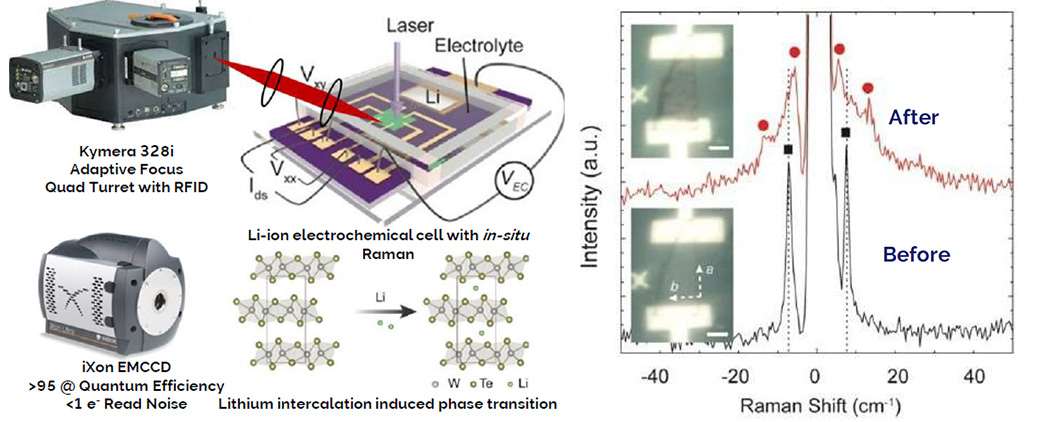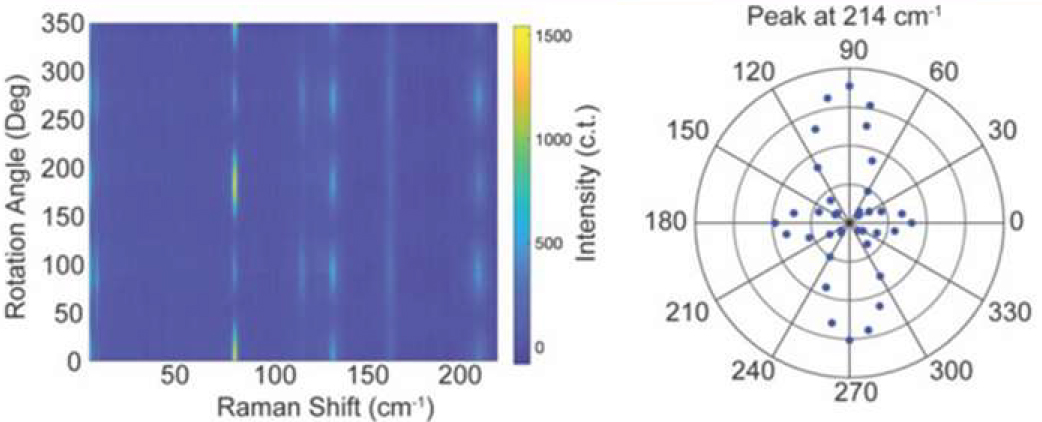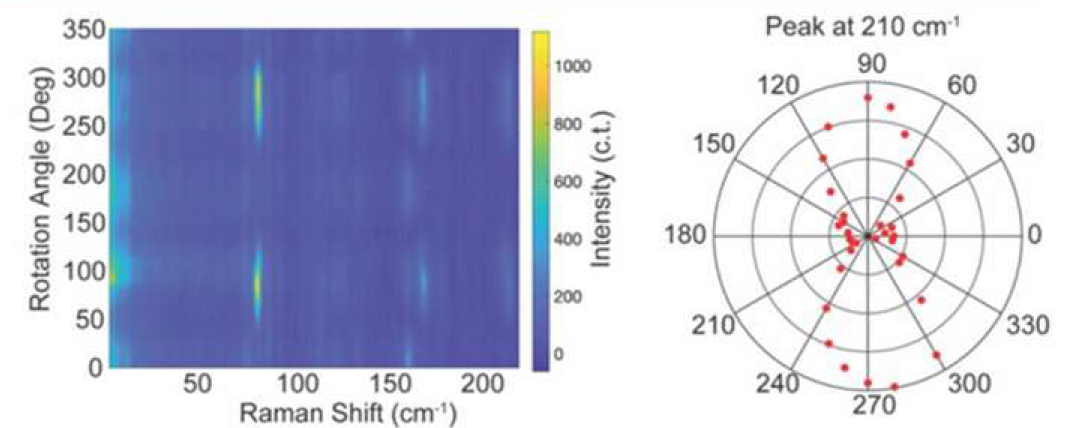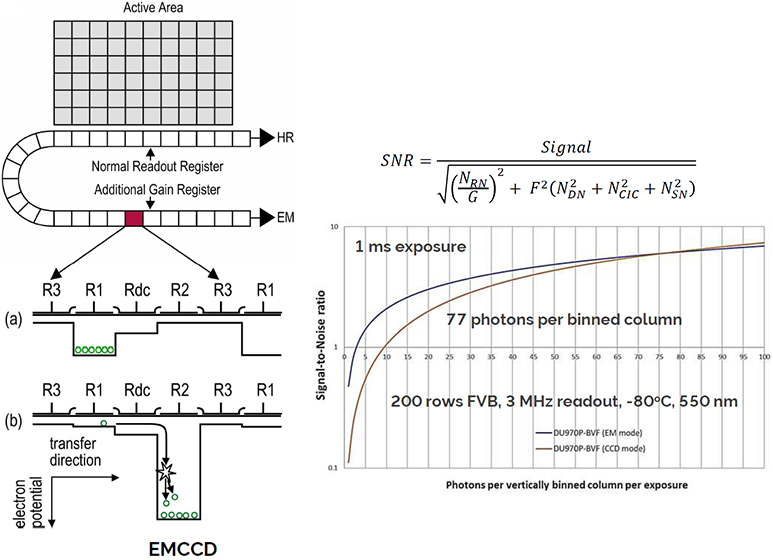Resources
 Part of the Oxford Instruments Group
Part of the Oxford Instruments Group
Expand
Collapse
 Part of the Oxford Instruments Group
Part of the Oxford Instruments Group
We report how Raman spectroscopy is used to characterize a lithium intercalation induced phase transition in the Weyl semimetal WTe2. Low frequency Raman spectra, sensitive to inter-layer vibrational modes, are presented and show a splitting of the shear mode at 8 cm-1 into two peaks at 6 cm-1 and 13 cm-1, indicating a reduction of symmetry upon lithiation.
Angular-resolved Raman spectroscopy reveals a change in the symmetry of the Raman modes around 210 cm-1 from four-fold to two-fold for the non-lithiated and lithiated samples respectively, consistent with a Td to Td’ phase transition in the crystal structure of the sample.
The discovery of this new phase enriches the phase diagram of WTe2 and provides a platform to study the interplay between superconductivity and charge density waves (CDW). It is expected that the lithium intercalation approach to electron doping will introduce similar phase transitions resulting in CDW states in a wider family of 2D transition metal diachalcogenide (TMD) systems that have been previously inaccessible, stimulating research for novel quantum phases such as topological superconductivity in these types of materials.

Low frequency Raman spectra before (bottom) and after (top) intercalation showing a split in the 8 cm-1 Raman inter-layer mode upon the phase transition.

Angle-resolved Raman spectral maps before (above) and after (below) the phase transition. A reduction of symmetry from four-fold to two-fold in the ~214 cm-1 Raman mode is consistent with a change in the point group of the crystal from Td to Td’.

| G | EM Gain | NDN | Dark Noise |
| F | EM Noise Factor | NCIC | Clock Induced Charge |
| NRN | Read Noise | NSN | Shot Noise |

Acknowledgments Low frequency and angle-resolved Raman data courtesy of Peijun Guo, Yale University.
Date: October 2023
Author: Shayne Harrel*, Adam Wise, Antoine Varagnat
Category: Technical Article
